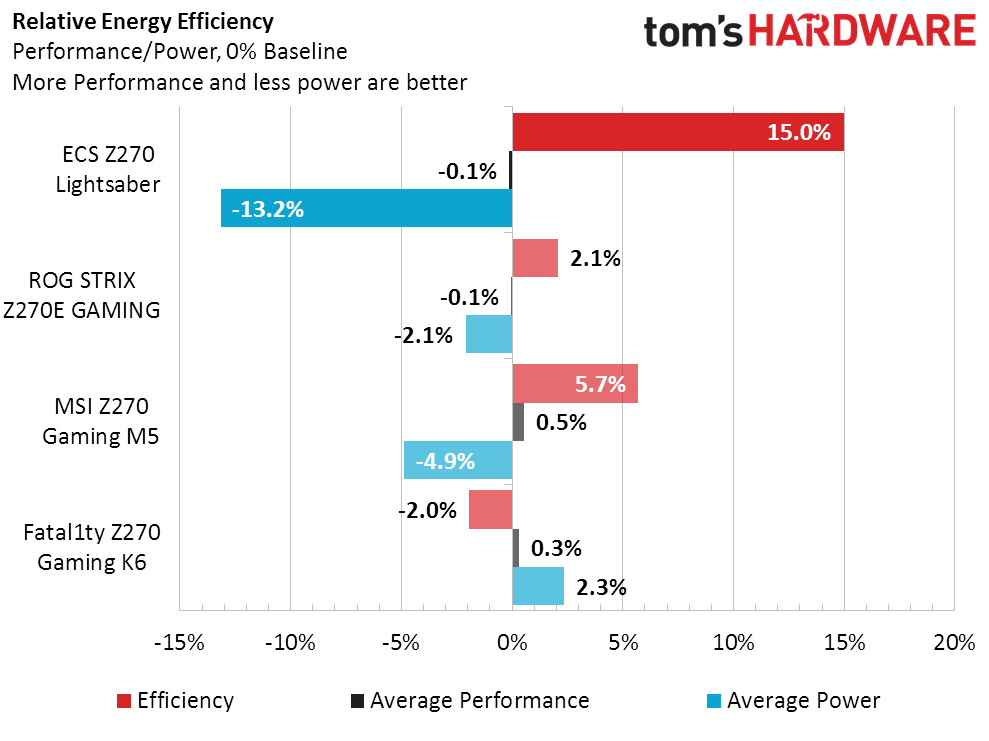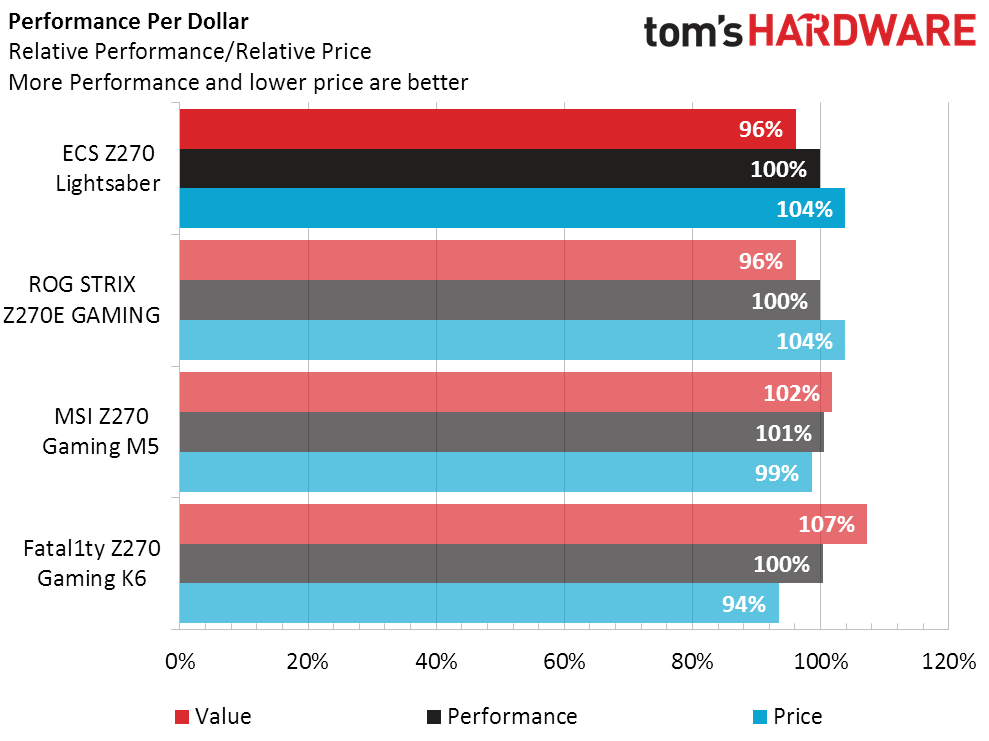ECS Z270-Lightsaber Motherboard Review
Why you can trust Tom's Hardware
Benchmarks & Final Thoughts
Synthetic Benchmarks
We’ve nearly eliminated variations in motherboard performance by disabling auto-overclocking cheats and enabling all available power savings features for our CPU, thus giving readers who like to set their own overclocks a reasonable clock-for-clock performance validation. ECS’ losses in 3DMark’s graphics scores come as surprise, though its combined scores appear perfectly reasonable.
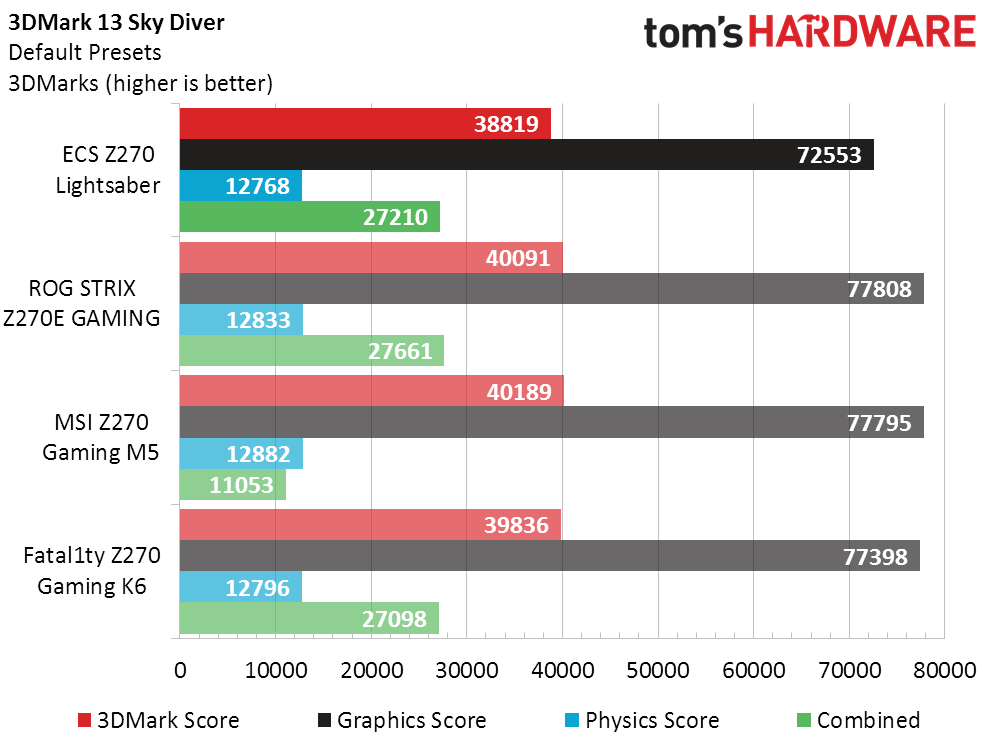
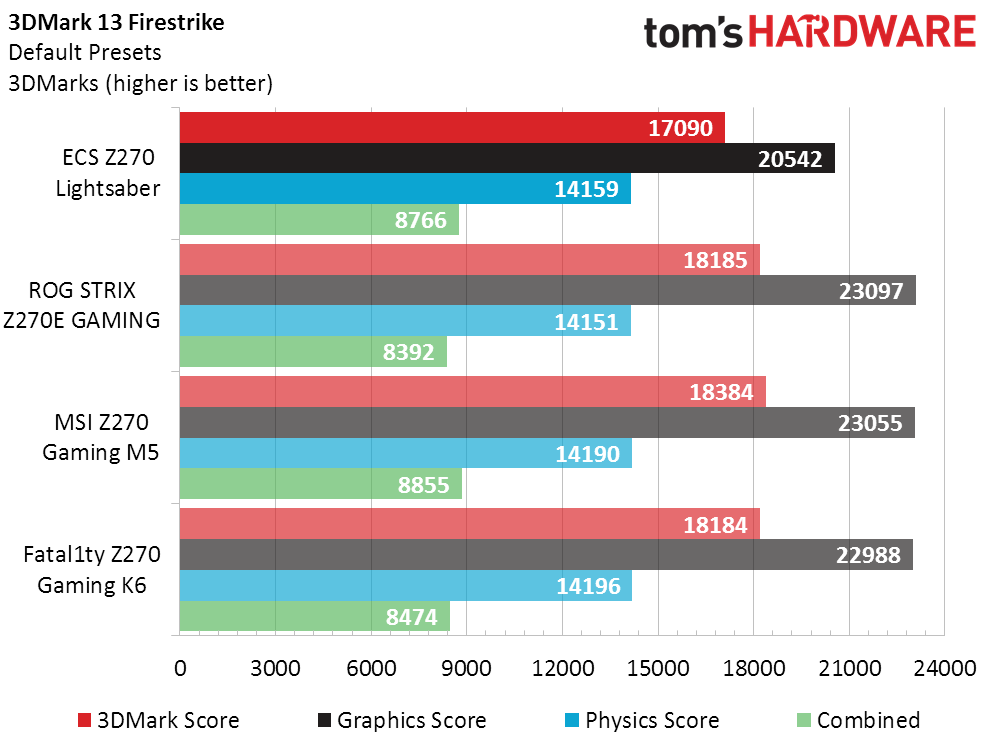
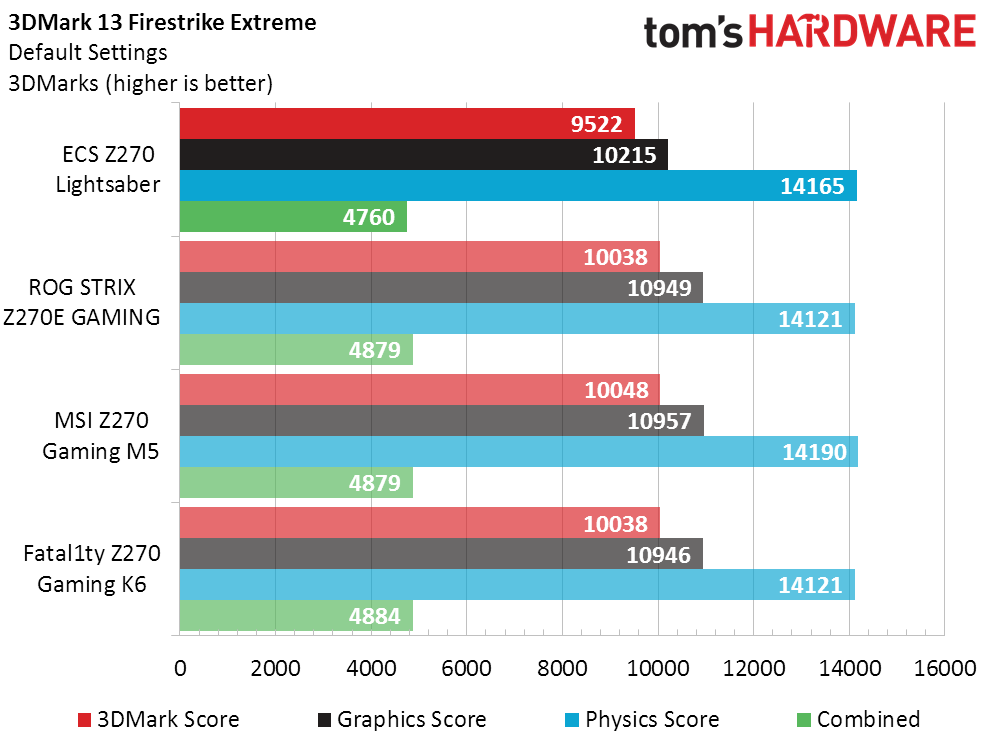
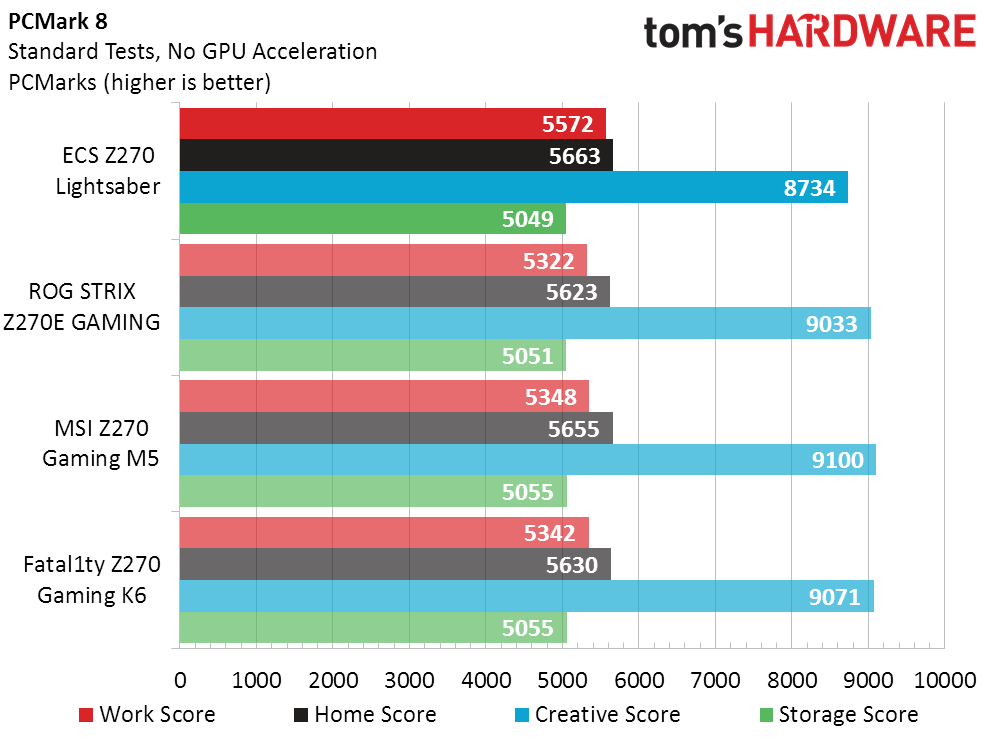

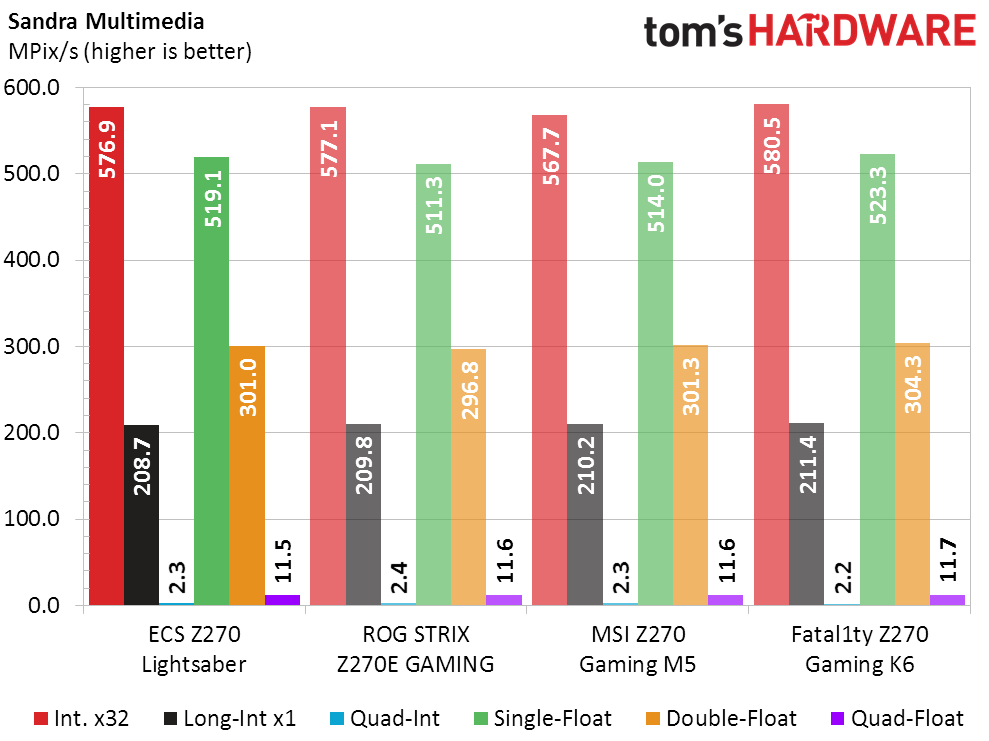
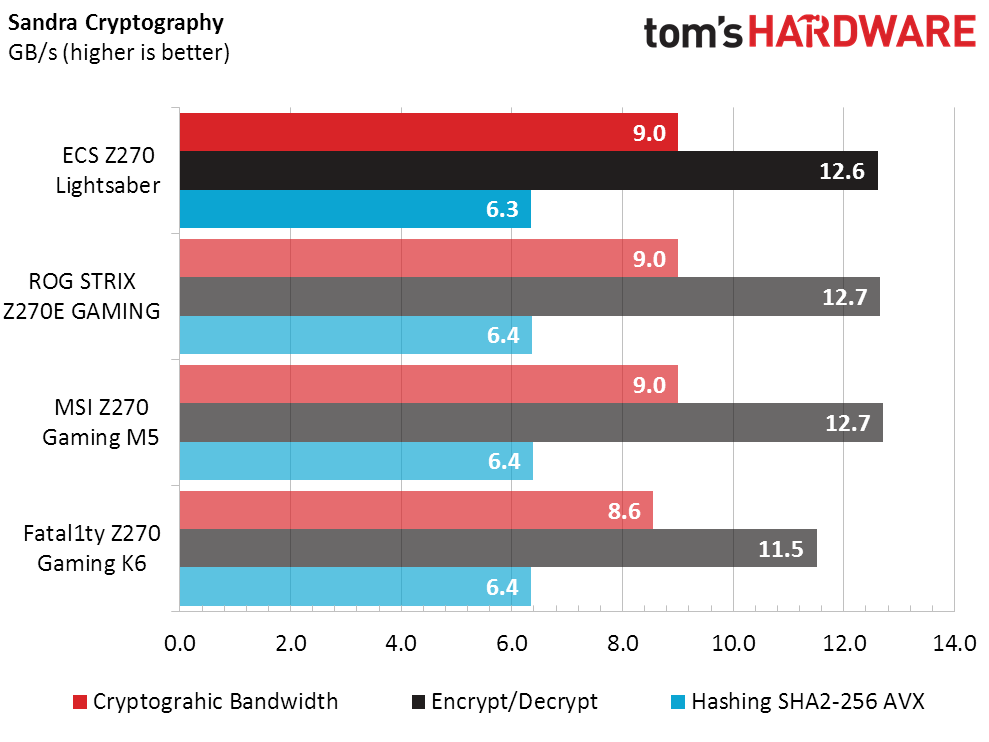
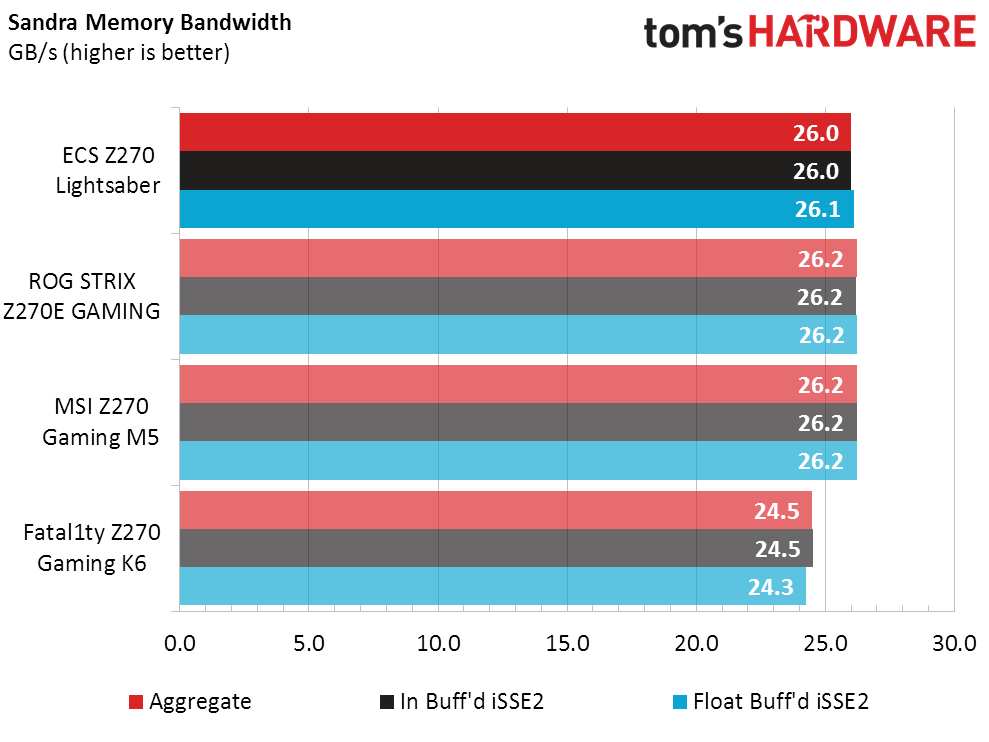

Sandra’s tests show the Z270-Lightsaber performing exactly as expected at the component level, yet once again we find a hiccup in Cinebench. These are all synthetic benchmarks, and we can only hope that actual applications will prove more revealing.
3D Games
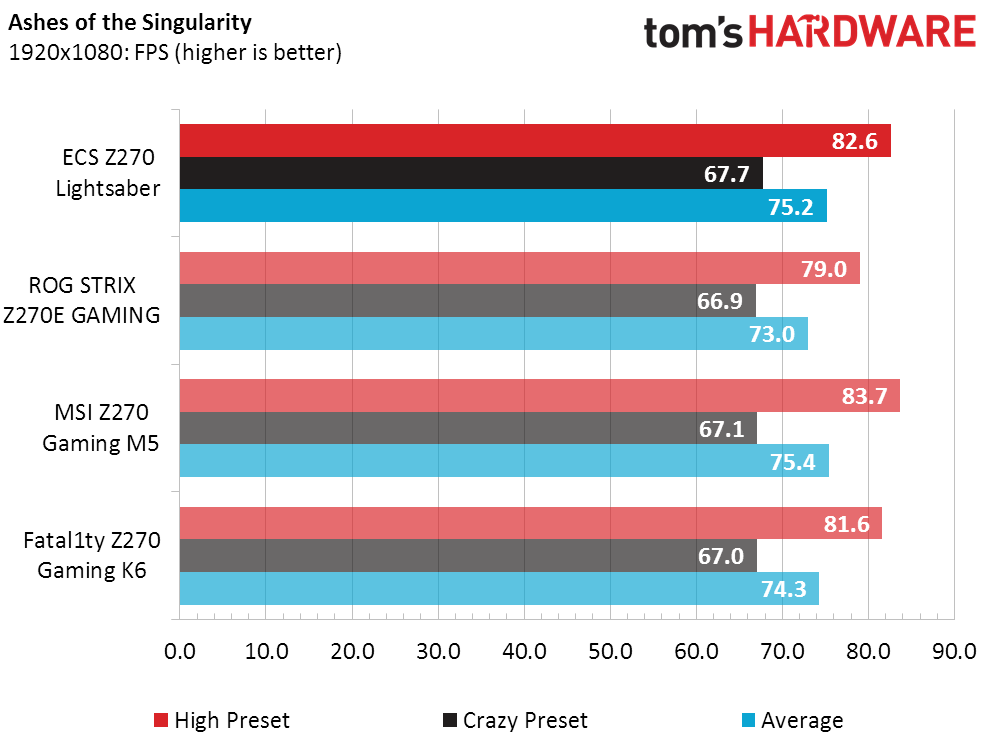
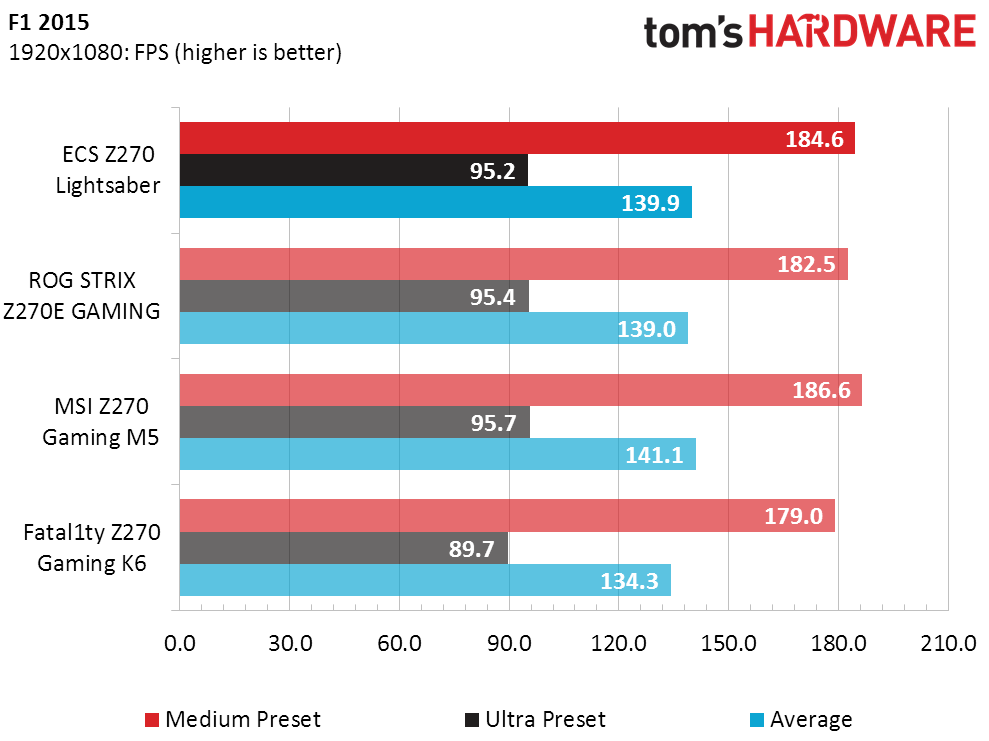
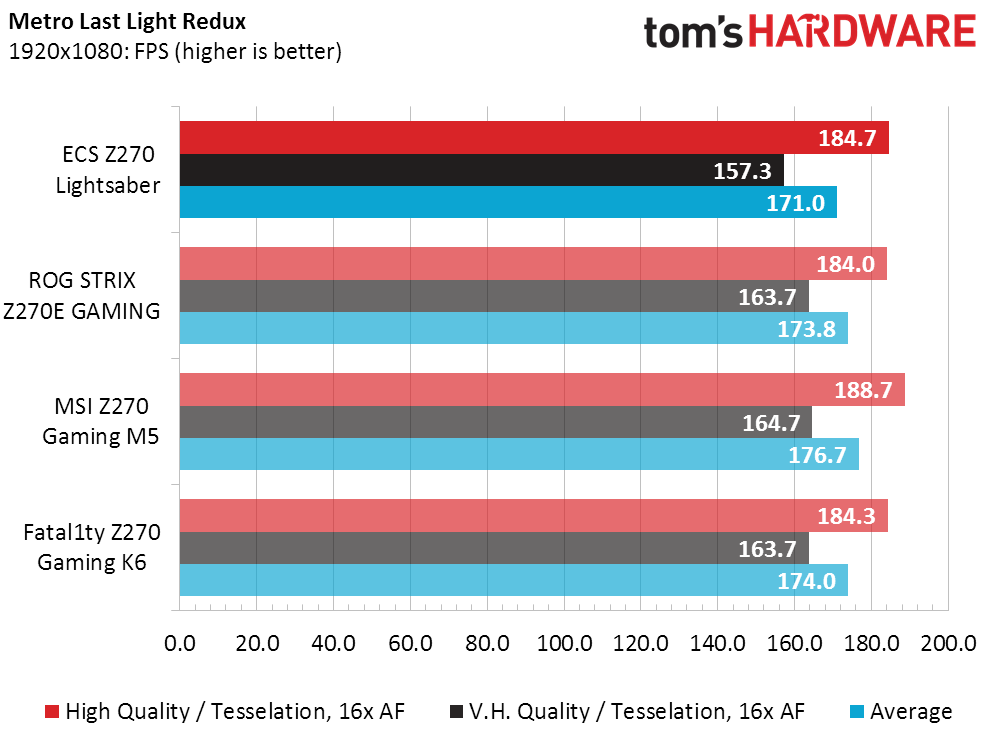
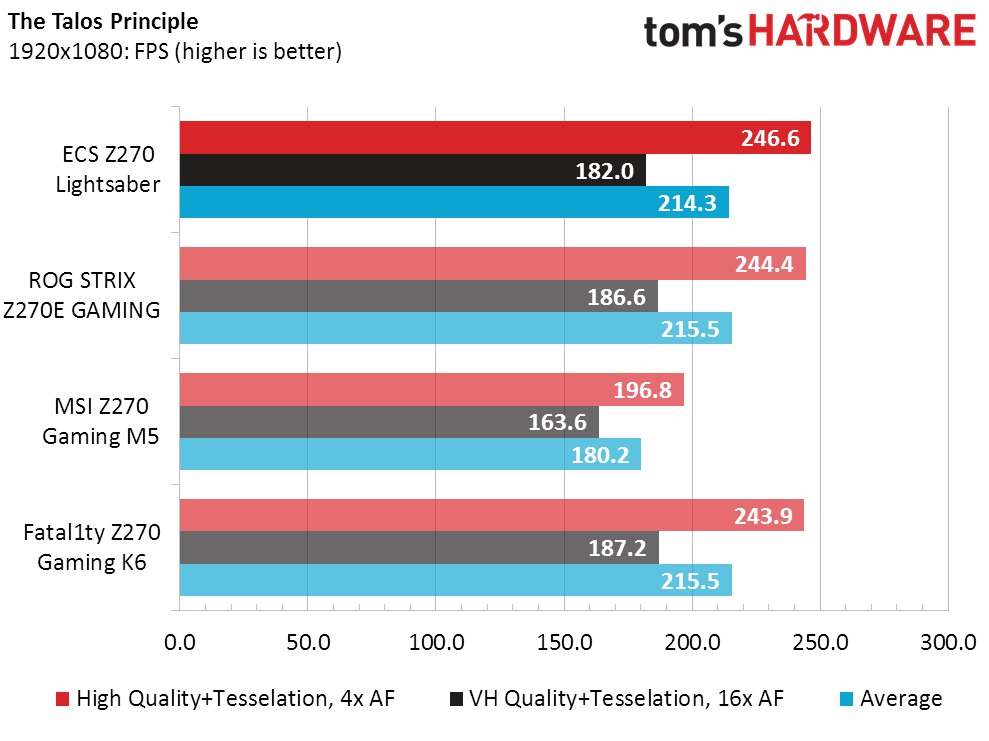
The Z270-Lightsaber excels in most of our games, showing only the smallest of losses in the most graphics-constrained of our two Metro LLR tests. The Z270 Gaming M5’s Talos results were impacted by its use of Nahimic’s 3D positional audio solution, and our review showed that it would have won without that software.
Timed Applications
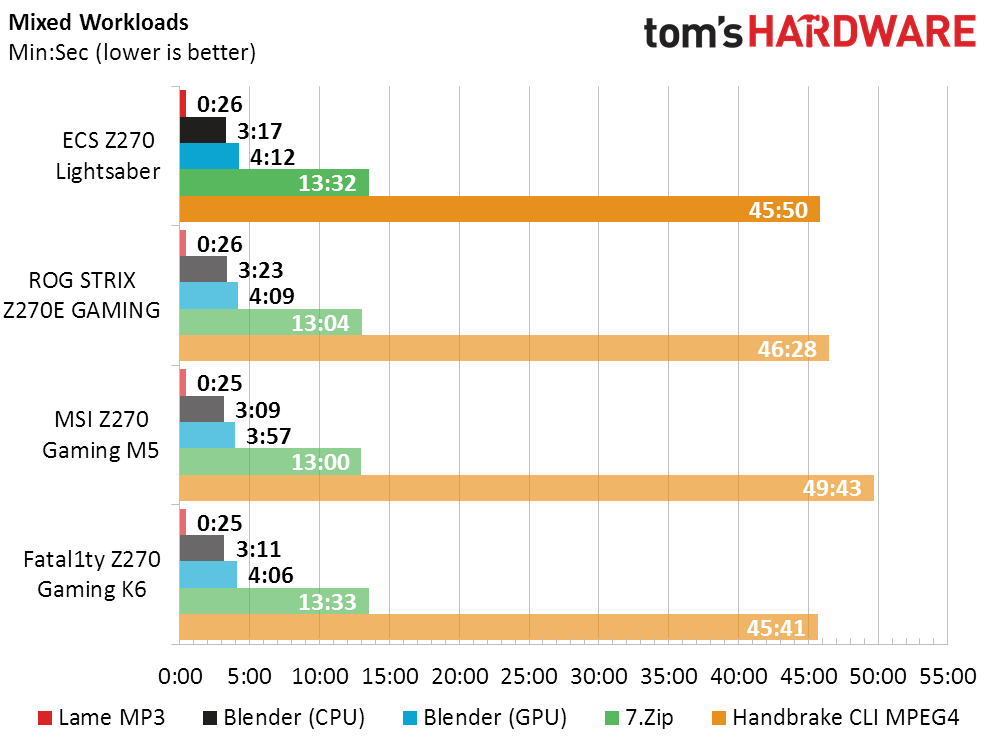
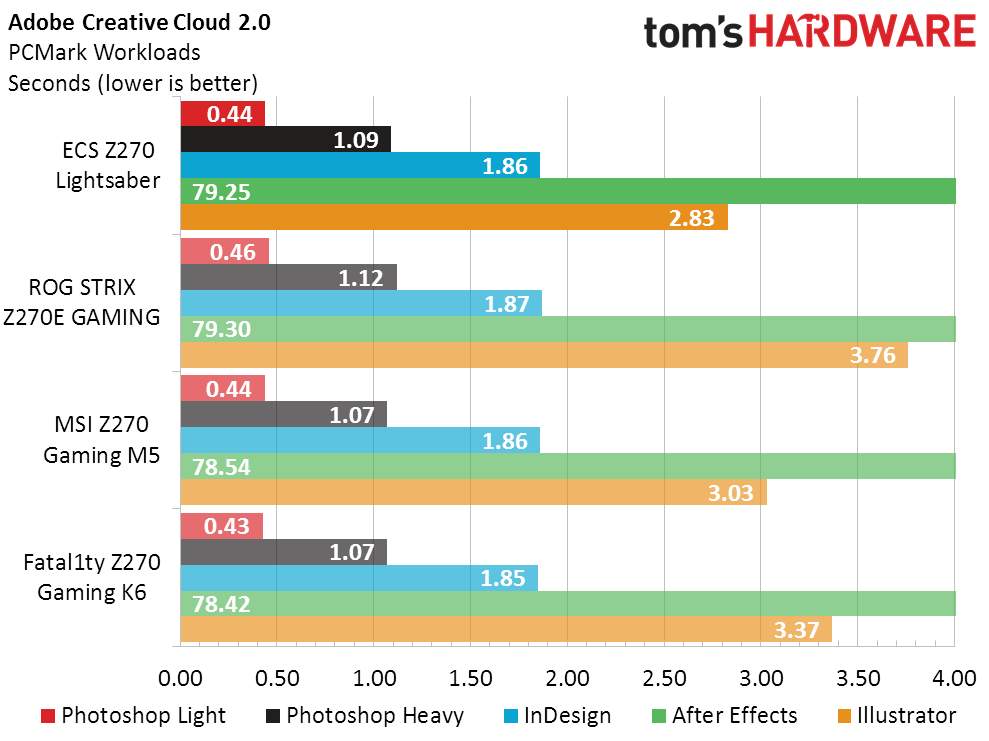

The Z270-Lightsaber produces average overall performance across our mixture of timed applications, its small leads offset by its tiny losses.
Power, Heat, & Efficiency
Reduced power consumption may be the best feature of the Z270-Lightsaber, its 20W power savings under full load enough to light my office or even power another, far less complex PC. Less heat comes out when less power goes in, so that the Z270-Lightsaber also had the lowest CPU temperature.

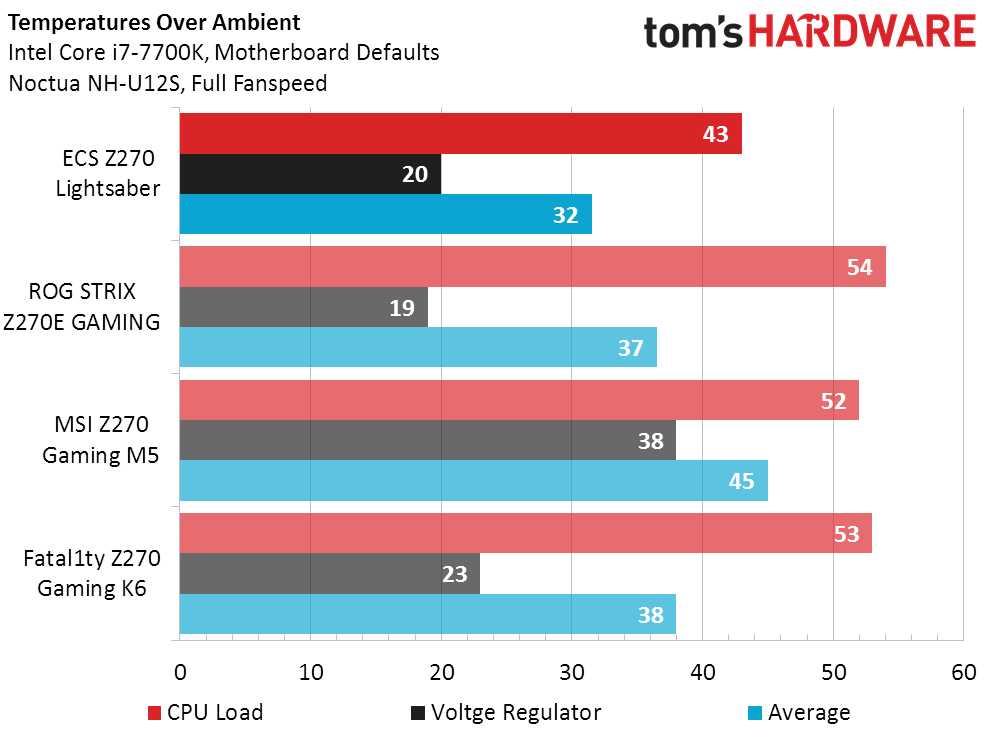
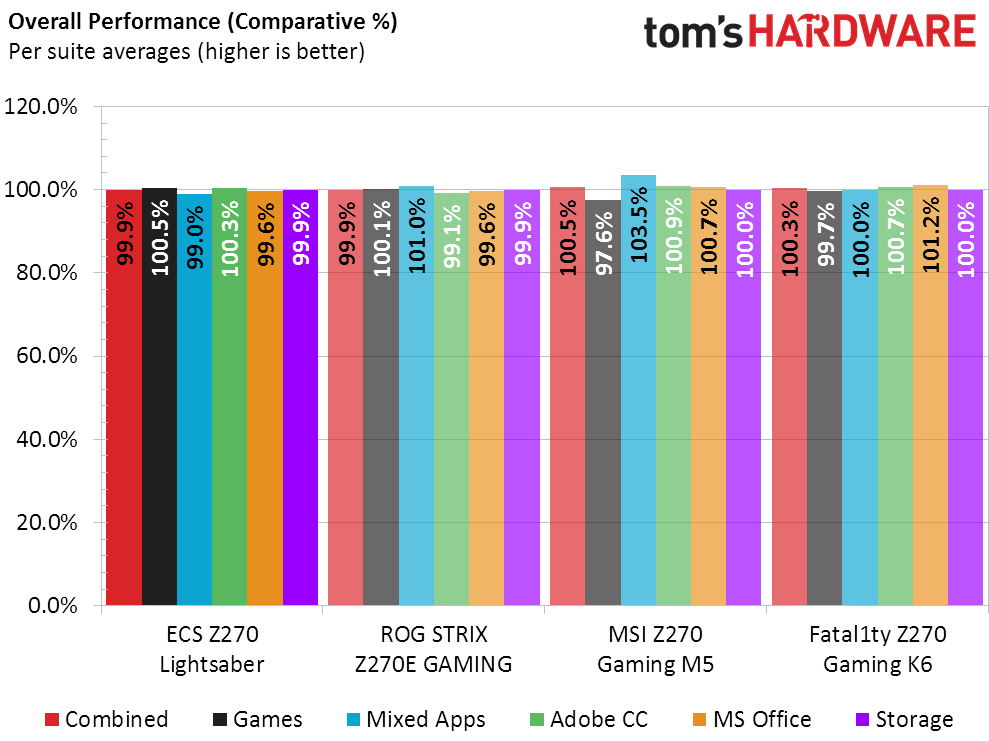
We use our complete test history to calculate efficiency, so the Z270-Lightsaber competes with everything from power-hungry premium boards to mini-ITX lightweights in this evaluation. Coming up just 0.1% below our Z270 average in performance, the Z270-Lightsaber leverages its low power use to lift a hefty 15% gain in efficiency, compared to a baker’s dozen of previously tested models.
Overclocking Compared
The more motherboards we tested, the less sufficient ASRock’s Fatal1ty Z270 Gaming K6 appeared in CPU overclocking. The Z270-Lightsaber costs more, and is nearly as deficient as that early sample. Yet while the K6 gained a little favor by being a good DRAM overclocker, the Z270-Lightsaber fell far behind. At this price, seasoned overclockers will want to consider either the Asus ROG or MSI samples instead.
Get Tom's Hardware's best news and in-depth reviews, straight to your inbox.


The Z270-Lightsaber’s low DRAM overclock resulted in sub-par overclocked bandwidth. Previously-shown good bandwidth at default settings means that this deficiency will matter only to overclockers.
Priced identically to the Asus ROG Strix Z270E Gaming, the ECS Z270-Lightsaber provides extremely similar performance per dollar. But features also cost money without impacting performance, and the Z270-Lightsaber includes a Killer E2500 PCIe network controller. The Asus motherboard’s Intel PHY, preferred by some users, is probably a little cheaper.
Value takes an unfortunate turn against ECS from that point. The Z270E Gaming adds a high-end Wi-Fi controller and has twice as many USB 3.1 controllers, and each of those ASM2142 controllers has twice the interface bandwidth of the Z270-Lightsaber’s solitary ASM1142. The Lightsaber’s flaunted RGB controller is completely outmoded by the Z270E Gaming’s individual-addressed LEDs, double LED-strip outputs, and elaborate firmware-based RGB LED control panel.
A great many visible features missing from the Strix Z270E Gaming are present in the Z270-Lightsaber, such as the onboard buttons and POST code display. The Z270-Lightsaber even extends that display to three characters and adds a selector switch, so users can view other things like CPU and DRAM voltage without software. The Asus board doesn’t even have a CLR_CMOS switch. Yet for many users, less-visible things like the inclusion of voltage control for all six of the Asus board’s fan headers could be equally important.
The Z270-Lightsaber’s features are all out in the open to get the attention of new builders, which could be a key sales factor in the enthusiast-value segment priced around 20% less. Yet until we see that lower price, we’re going to pass.
MORE: Best Motherboards
MORE: How To Choose A Motherboard
MORE: All Motherboard Content
-
Crashman Reply
I don't know. We received it late, and I think it was probably an intermediate step towards ECS's Z370 version.20227124 said:Who will be buying a Z270 at this point ?
